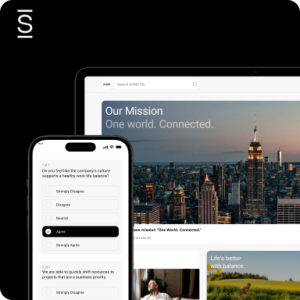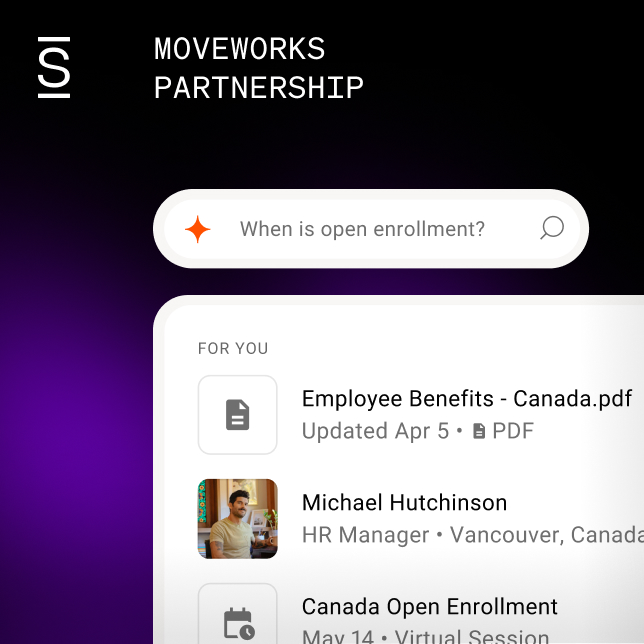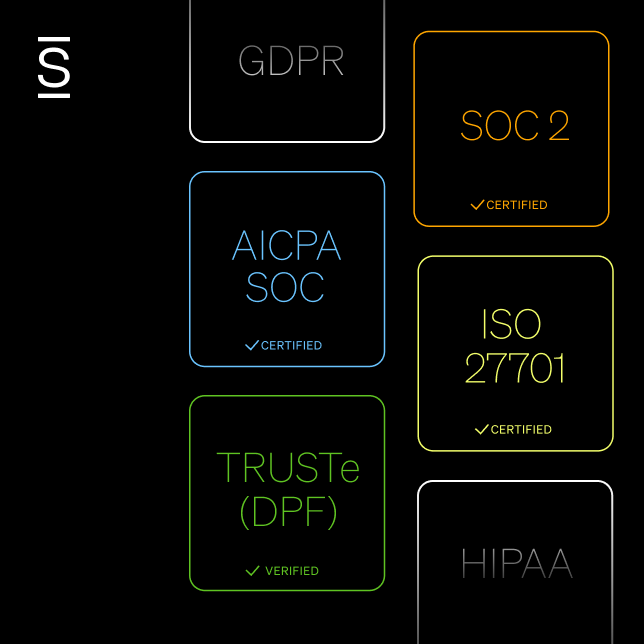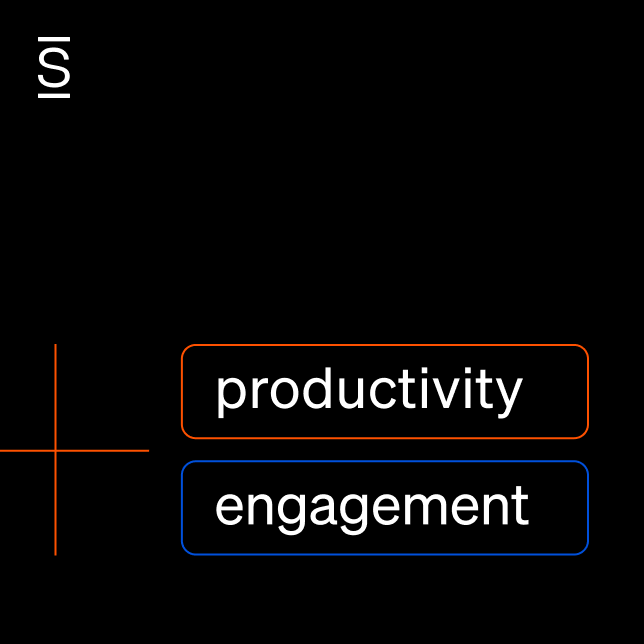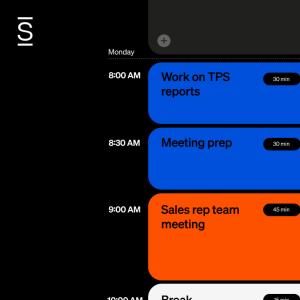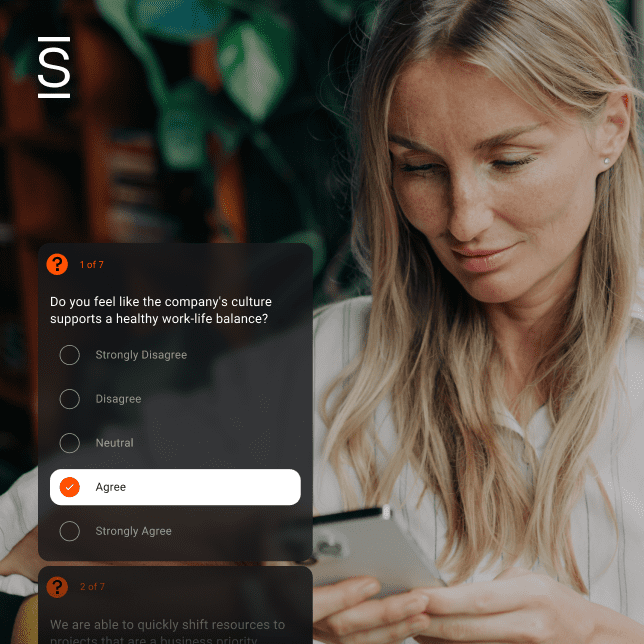The shift towards remote work has emphasized the need for transparent processes, clear communication, and thorough documentation. This has led companies to re-evaluate their onboarding programs—to ensure they convey a genuine portrayal of company culture and build trust with new hires.
Employee onboarding is the new hire’s first impression of a company. It sets the tone for the employee’s future relationship with the company and its culture.
The hew hire onboarding process should optimize a new hire’s full potential. These new additions to your team are brimming with curiosity, motivation, and ambition, and this process sets the stage for its continued momentum.
However, not all onboarding processes are created equal. And just as it can prove inspirational, a shaky onboarding process can significantly impact employee engagement, retention, and overall experience with the company.
Losing an employee’s love early on can be easily avoided with a bit of forward planning. And this is where a new hire onboarding survey comes into play.
What is a new hire onboarding survey?
A new hire onboarding survey is a questionnaire given to new employees to assess their experience during the onboarding process. The survey typically includes questions about the orientation, training, resources, and support provided during onboarding.
The survey aims to gather feedback from new employees to improve the onboarding process and overall employee experience. According to Glassdoor, organizations with effective onboarding processes experience an 82% increase in new hire retention and a productivity boost of over 70%.
A well-structured onboarding process is crucial for new hires to succeed in their new workplace, especially in remote work settings.

According to a recent survey by Gallup, only 12% of employees strongly agree that their companies have effective onboarding programs. However, employees who are content with their onboarding experience are 2.6 times more likely to be extremely satisfied with their workplace.
Many new hires in today’s workplace are dissatisfied with onboarding programs, as only 29% feel fully supported and equipped to succeed in their new roles. Gathering feedback through surveys can be valuable in optimizing the onboarding process and making it more effective for future employees.
Benefits of a smooth onboarding process
Having a smooth onboarding process can be beneficial for both employees and employers. Here are some of the key advantages
- Improved employee engagement: Employees who have a positive onboarding experience are more likely to feel engaged and committed to the company.
- Increased retention: A smooth onboarding process can lead to higher employee retention rates, which reduces turnover costs for the company
- Enhanced productivity: Proper onboarding can help new employees get up to speed faster by familiarizing them with their roles and the necessary technical know-how. This leads to increased productivity for the company.
- Better company culture: Onboarding can be an opportunity to communicate the company’s culture, values, and goals, helping new employees better understand and align with the company’s mission.
- More assertive employee advocacy: A positive onboarding experience can help employees become advocates for the company, leading to increased employee referrals and positive reviews.
- Improved employee experience: An effective onboarding process sets the tone for the employee’s experience with the company, helping them feel valued, supported, and empowered.
The importance of a new hire onboarding survey
A successful onboarding process can significantly enhance team and organizational productivity by leveraging the unique strengths of new hires and aligning them with the company’s values and culture. Therefore, conducting employee onboarding surveys to gather feedback is crucial for refining the process and ensuring continued success.
Here are some critical reasons for conducting these surveys:
- Gathering insights: Surveys can help gather insights into new employees’ perceptions of the company and the onboarding process.
- Assessing understanding: Surveys can assess new employees’ understanding of their roles and provide the necessary knowledge to fulfill responsibilities.
- Aligning expectations: Surveys can help align new employees’ expectations with those of the organization.
- Identifying gaps: Surveys can identify any gaps in training or information needed to improve job performance.
- Troubleshooting issues: Surveys can also help troubleshoot any issues new employees may face.

Benefits of new hire onboarding survey questions
Hew hire onboarding surveys provide valuable feedback that can be used to improve the onboarding process and overall employee experience. Here are some essential advantages of conducting employee onboarding surveys:
- Identifying areas for improvement: Surveys can help identify areas where the onboarding process can be improved, such as training, orientation, or support.
- Measuring employee satisfaction: Surveys can help measure the employee’s satisfaction with the onboarding process, giving the company a better understanding of what is working and what is not.
- Tracking progress over time: Surveys can track progress over time and see if changes to the onboarding process are positively impacting.
- Providing insights for data-driven decisions: Surveys can offer insights that can be used for data-driven decisions about the onboarding process, making prescriptive analytics possible.
How to implement a new employee survey
To effectively implement a new employee onboarding survey, it is crucial to follow a set of critical steps. These include:
- Determine the timing: Choose when to administer the survey. It should be immediately after the onboarding process, but another could happen in a few weeks and then a few months later.
- Choose the questions: Select questions that will provide valuable feedback on the onboarding process. These questions could relate to orientation, training, resources, support, and overall satisfaction.
- Keep it concise and simple: Ensure the survey is straightforward and easy to complete. Employees are more likely to participate if the survey is quick and straightforward.
- Ensure anonymity: Guarantee anonymity and confidentiality to encourage honest feedback from employees.
- Involve teams and managers: Engage teams and managers in onboarding and seek their input and feedback to create a collaborative and supportive workplace atmosphere for new hires.
- Use software: Use software to create and distribute the survey and to collect and analyze the results. This can help streamline the process and make it more efficient.
- Analyze the results: Analyze the survey results to identify areas where the onboarding process can be improved. Use the feedback to make changes and measure progress over time.

Examples of new hire onboarding survey questions
While there is no set questionnaire for evaluating an employee’s onboarding experience, asking the right questions can help make informed decisions.
Employee onboarding surveys can include a variety of question types, such as:
- Likert scales (with a range of 1-5 to indicate strong disagreement or agreement)
- 1 to 10 scales to rate overall satisfaction
- Binary survey questions (“Yes” or “No.”)
- Open-ended queries that provide detailed feedback on the reasons behind their decisions and their decision to stay.
Here are some sample questions that can be included in an employee onboarding survey:
- How was your orientation experience?
- Did you feel welcomed and valued by the team?
- Were you adequately prepared for your job during the onboarding process?
- How helpful was the training provided during the onboarding process?
- Did the resources provided during the onboarding process help you?
- Did you feel supported during the onboarding process?
- Overall, how satisfied are you with the onboarding process?
- What is one thing we could have done differently to improve your overall onboarding experience?
Asking employees to rate their shared experience, perception, and beliefs about the onboarding process in a standardized manner can aid in improving subsequent onboarding processes after analyzing the results.
Pre-onboarding surveys for new hires
A pre-onboarding survey is a questionnaire given to new hires before their start date to help them prepare for their role and the company culture.
The survey can include questions about the new employee’s background, expectations, and goals for their position. The survey’s aim is to gather information that will help tailor the onboarding process to the new hire’s needs and ensure a smooth transition.
Post-onboarding surveys for new hires
A post-onboarding survey is a critical tool in assessing the effectiveness of an organization’s onboarding program.
It helps to gather insights on the new employee’s experience, identify areas of improvement, and create a positive impression of the organization. Additionally, the feedback collected can be used to adjust and fine-tune the onboarding program, leading to a more effective and satisfying experience for future new hires.
How Simpplr can help create a great onboarding experience
Creating a comprehensive employee onboarding survey process involves more than just printing forms and giving presentations. It requires a thorough evaluation of the entire process to identify areas that need improvement.
Implementing an effective survey process can significantly impact how a company operates, leading to better outcomes. Simpplr offers a perfect solution for companies seeking to enhance their employee onboarding process and overall employee experience.
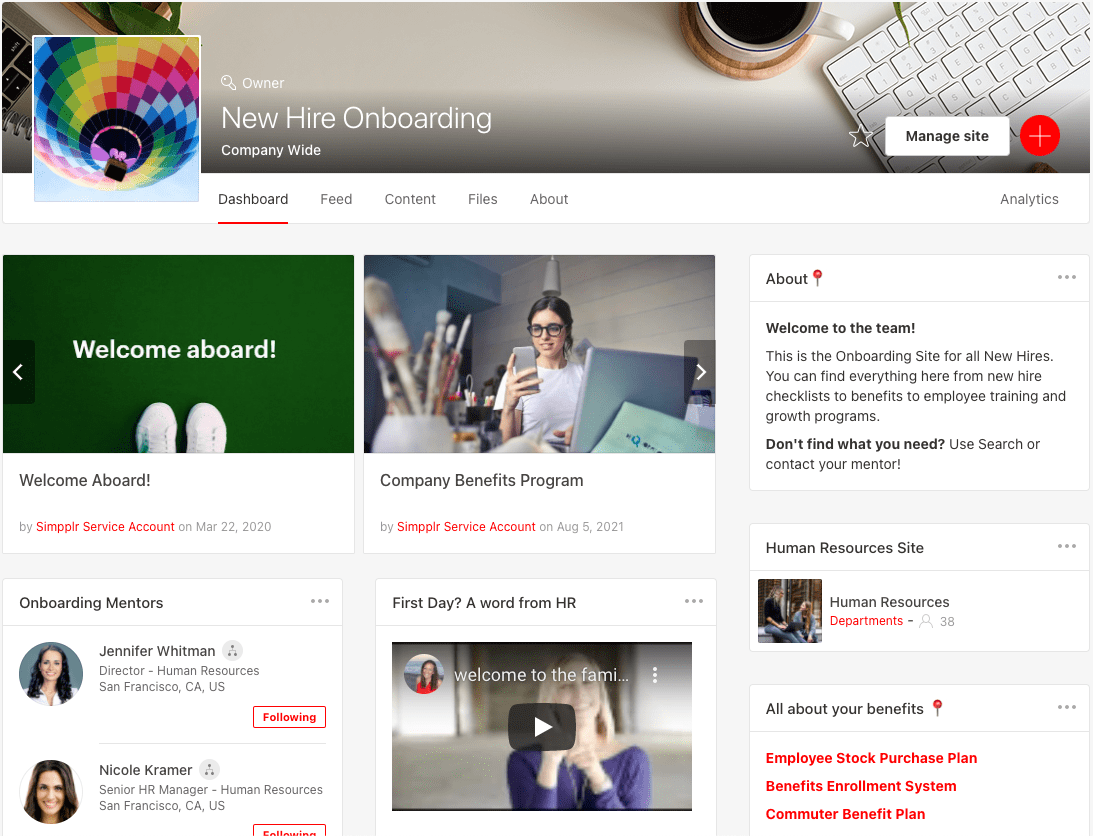
With Simpplr, you can provide your new hires with a modern intranet solution that effectively communicates the company culture, values, and goals. Simpplr also automates the onboarding process, saving time and resources while providing valuable insights to employees with prescriptive analytics.
HR leaders can easily implement best practices and gather valuable feedback through pre- and post-onboarding surveys, making data-driven decisions to continuously improve the onboarding process and enhance the overall company culture. Reach out for a demo to see these options and more in action!


